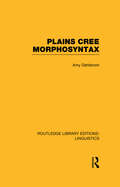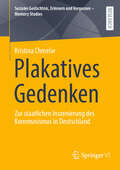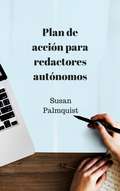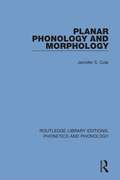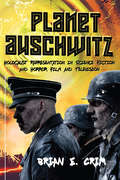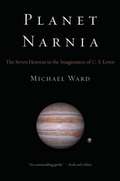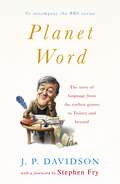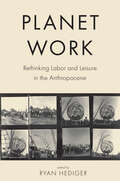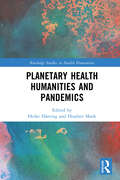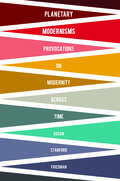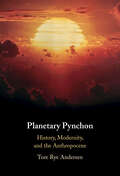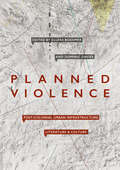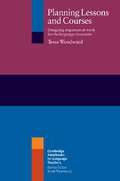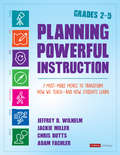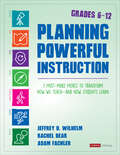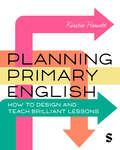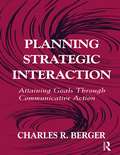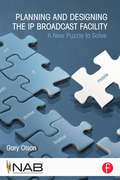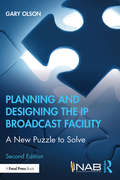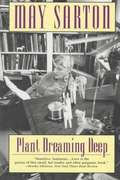- Table View
- List View
Plains Cree Morphosyntax: Linguistics: Plains Cree Morphosyntax (Routledge Library Editions: Linguistics)
by Amy DahlstromThis book explores several topics in Cree morphology, syntax and discourse structure. Cree, an Algonquian language, is non-configurational: the grammatical relations of subject and object are not expressed by word order or other constituent structure relations, as they are in a configurational language like English. Instead, subjects and objects are expressed by means of the inflection on the verb. Cree is typical of non-configurational languages in allowing a great deal of word order variation. This study examines in detail aspects of the Plains Cree dialect, giving a valuable insight into the structure of this endangered language.
Plaintext: Essays
by Nancy MairsIn "Plaintext" -- an anthology of essays -- Mairs discusses in a lucid, coherent voice the realities of living with multiple sclerosis, her suicide attempts and depression and most importantly what she has learned. Five of the essays have previously been published elsewhere, while the other seven are original works discussing the changing roles of women in society.
Plakatives Gedenken: Zur staatlichen Inszenierung des Kommunismus in Deutschland (Soziales Gedächtnis, Erinnern und Vergessen – Memory Studies)
by Kristina ChmelarIm Fokus der Arbeit steht eine von der Bundesstiftung zur Aufarbeitung der SED-Diktatur federführend organisierte Jubiläumsausstellung. An dieser besonderen und gleichermaßen signifikanten Form staatlicher Geschichtspolitik interessiert vor allem das Wie der Darstellung des Kommunismus, wobei verschiedene sozialwissenschaftliche Abstraktionsebenen eingepreist werden. Zunächst entwickelt die Autorin eine kulturwissenschaftlich informierte und gleichsam für Politik sensible postkonstruktivistische Gedenkanalytik. Auf die zentrale Begrifflichkeit der Inszenierung zulaufend grundiert diese Analytik eine systematische Beschäftigung mit dem Zurschaustellungsprozess sowie mit der fertigen Schau. Bei der doppelten Dekonstruktion wird die Ausstellung in ihrer Multimedialität und -modalität ernstgenommen. Auch verschiedene Kontexte und Ambivalenzen finden Berücksichtigung. Am Ende kann die Fallstudie zeigen, dass die von der Bundesstiftung verfolgte, plakative geschichtspolitische Strategie in verschiedener Hinsicht problematisch ist. Den staatlich formulierten Anspruch, die innere Einheit des vereinigten Deutschlands mittels der Aufarbeitung des Kommunismus zu fördern und zu festigen, muss sie regelmäßig verfehlen.
Plan de acción para redactores autónomos
by Susan Palmquist¿Has pensado alguna vez en ser redactor autónomo para ganar dinero extra o incluso como una profesión a tiempo completo o como un paso intermedio para escribir libros de no ficción? Si es así, ser redactor autónomo es para ti. Aprenderás: A crear tu portafolio. A conseguir tus primeras publicaciones sin tener experiencia previa. La importancia de estudiar tus mercados y cómo estudiarlos para sacarles beneficio. Los tipos de redacciones como autónomo. A hacer una lluvia de ideas. A hacer la mejor propuesta. A trabajar con editores. Qué hacer cuando consigues el encargo. A encontrar y entrevistar a los expertos adecuados para tu artículo. A continuar recibiendo encargos. A gestionar tu tiempo y dinero.
Plan d’écriture de roman: Plan d’écriture de roman
by Susan PalmquistSaviez-vous que l'écriture d'un livre se classe parmi les trois premières choses sur les listes de choses à faire? Peut-être que c'est aussi sur le vôtre ou peut-être que vous avez toujours pensé à écrire un roman ou que vous avez une histoire qui doit être racontée. Écrire un livre est plus difficile que vous ne le pensez... Être publié encore plus difficile, alors j'ai mis en place ce que j'appelle, Novel Writing Blueprint. Il vous montrera comment développer de bonnes habitudes d'écriture dès le premier jour, comment commencer et terminer le livre, mais surtout, partagez avec vous des secrets d'initiés sur ce qui fait une bonne histoire, de grands personnages et une intrigue qui fera penser à un éditeur ou à un agent que vous écrivez depuis des années. Bien qu'il ne s'agisse pas d'un raccourci ou d'une approche de sortie du livre en 30 jours, c'est un plan facile à suivre sur l'ensemble du processus d'écriture du roman. Quelque chose que j'aurais aimé avoir quand je me suis lancé dans mon propre voyage d'écriture. Ce plan va vous montrer... Comment tracer Comment créer des personnages que les lecteurs vont adorer Comment choisir la bonne personne pour raconter l'histoire Comment écrire un dialogue pour que vos lecteurs pensent qu'ils écoutent une vraie conversation. Comment montrer et ne pas dire Comment vous assurer que votre personnage a un objectif et qu'il y a suffisamment de conflits tout au long de votre histoire Façons d'augmenter l'impact émotionnel Et bien plus encore... Si vous pensez que le moment est venu de commencer à écrire un roman, pourquoi ne pas prendre une copie du plan d'écriture de roman aujourd'hui et être sur la bonne voie pour écrire une histoire qui, qui sait, pourrait être le prochain best-seller.
Planar Phonology and Morphology (Routledge Library Editions: Phonetics and Phonology #3)
by Jennifer S. ColeFirst published in 1991. In this study, the author investigates the proper treatment of harmony processes in phonological theory. The data examined lead to a formulation of morphologically governed harmony processes which involves multi-planar representations. The analysis of multi-planar harmony leads into a discussion of Plane Conflation and Bracket Erasure in Lexical Phonology. This title will be of great interest to students of linguistics.
Planet Auschwitz: Holocaust Representation in Science Fiction and Horror Film and Television
by Brian E. CrimPlanet Auschwitz explores the diverse ways in which the Holocaust influences and shapes science fiction and horror film and television by focusing on notable contributions from the last fifty years. The supernatural and extraterrestrial are rich and complex spaces with which to examine important Holocaust themes - trauma, guilt, grief, ideological fervor and perversion, industrialized killing, and the dangerous afterlife of Nazism after World War II. Planet Auschwitz explores why the Holocaust continues to set the standard for horror in the modern era and asks if the Holocaust is imaginable here on Earth, at least by those who perpetrated it, why not in a galaxy far, far away? The pervasive use of Holocaust imagery and plotlines in horror and science fiction reflects both our preoccupation with its enduring trauma and our persistent need to “work through” its many legacies. Planet Auschwitz website (https://planetauschwitz.com)
Planet Narnia: The Seven Heavens in the Imagination of C. S. Lewis
by Michael WardOver the years, scholars have labored to show that C. S. Lewis's famed Chronicles of Narnia have an underlying symbolic coherence, pointing to such possible unifying themes as the seven sacraments, the seven deadly sins, and the seven books of Spenser's Faerie Queene. None of these explanations has won general acceptance and the nature of Narnia's symbolism has remained a puzzle. Michael Ward has finally solved the mystery. In Planet Narnia, he argues convincingly that medieval cosmology, a subject which fascinated Lewis throughout his life, provides the imaginative key to the seven novels. Drawing on the whole range of Lewis's writings (including previously unpublished drafts of the Chronicles), Ward shows that the Narnia stories were designed to express the characteristics of the seven medieval planets--the Sun, the Moon, Mars, Mercury,Venus, Jupiter and Saturn--planets which Lewis described as "spiritual symbols of permanent value" and "especially worthwhile in our own generation." Using these seven symbols, Lewis secretly constructed the Chronicles so that the story-line in each book, countless points of ornamental detail, and, most important, the portrayal of the Christ-figure of Aslan, all serve to communicate the governing planetary personality. For instance, in The Voyage of the "Dawn Treader," the sun is the prevailing planetary spirit: magical water turns things to gold, the solar metal; Aslan is seen flying in a sunbeam; and the sun's rising place is actually identified as the destination of the plot: "the very eastern end of the world."Planet Narnia is a ground-breaking study that will provoke a major reassessment not only of the Chronicles, but of Lewis's whole literary and theological outlook, revealing him to be a much subtler writer and thinker than has previously been recognized.
Planet Word
by J. P. DavidsonUnravel the mysteries of language with J.P. Davidson's remarkable Planet Word.'The way you speak is who you are and the tones of your voice and the tricks of your emailing and tweeting and letter-writing, can be recognised unmistakably in the minds of those who know and love you.' Stephen Fry From feral children to fairy-tale princesses, secrets codes, invented languages - even a language that was eaten! - Planet Word uncovers everything you didn't know you needed to know about how language evolves. Learn the tricks to political propaganda, why we can talk but animals can't, discover 3,000-year-old clay tablets that discussed beer and impotence and test yourself at textese - do you know your RMEs from your LOLs? Meet the 105-year-old man who invented modern-day Chinese and all but eradicated illiteracy, and find out why language caused the go-light in Japan to be blue. From the dusty scrolls of the past to the unknown digital future, and with (heart) the first graphic to enter the OED, are we already well on our way to a language without words?In a round-the-world trip of a lifetime, discover all this and more as J. P. Davidson travels across our gloriously, endlessly intriguing multilingual Planet Word.John Paul Davidson is a film and television director and producer. After studying at Bristol University and completing his doctoral field work in The University of Malysia, he joined the BBC's Travel and Exploration Unit as their resident anthropologist.Stephen Fry's film, stage, radio and television credits are numerous and wide-ranging. He has written, produced, directed, acted in or presented productions as varied as Wilde, Blackadder, Jeeves and Wooster, A Bit of Fry and Laurie, Fry's English Delight and QI. After writing many successful books, his recent memoir The Fry Chronicles was a number one bestseller.
Planet Work: Rethinking Labor and Leisure in the Anthropocene
by James Armstrong Jennifer K. Ladino Amanda Adams Ted Geier Sharon O'Dair Ryan Hediger David Rodland Sinan Akilli Daniel Clausen Matt Wanat Will Elliot Kevin Maier Jo ReyLabor and labor norms orient much of contemporary life, organizing our days and years and driving planetary environmental change. Yet, labor, as a foundational set of values and practices, has not been sufficiently interrogated in the context of the environmental humanities for its profound role in climate change and other crises. This collection of essays demonstrates the urgent need to rethink models and customs of labor and leisure in the Anthropocene. Recognizing the grave traumas and hazards plaguing planet Earth, contributors expose fundamental flaws in ideas of work and search for ways to redirect cultures toward more sustainable modes of life. These essays evaluate Anthropocene frames of interpretation, dramatize problems and potentials in regimes of labor, and explore leisure practices such as walking and storytelling as modes of recasting life, while a coda advocates reviving notions of work as craft.
Planetary Health Humanities and Pandemics (Routledge Studies in Health Humanities)
by Heather Meek Heike Härting, Edited byThis volume explores the variable meanings and discourses of historical and contemporary pandemics to rethink theories and practices of planetary health.Rather than conflating the planetary with anthropogenic climate change, planetary geo-engineering, or the "global," the volume elaborates a version of planetary health humanities that invites decolonial, creative, and pluridisciplinary modes of thinking and sees "health" as a complex non-anthropocentric process that moves within the multiple scales of the planetary. The volume offers new historical trajectories as it considers an eighteenth-century woman author’s readings of plague, intersecting narratives of nineteenth-century lactation and vaccination, and the forgotten biopolitics of NASA’s Planetary Quarantine Program. It offers accounts of decolonial and oracular planetary health, insists that the role of literature in the health humanities is not merely instrumental, explores viral and planetary co-inhabitations, and scrutinizes inequities faced by global health workers. The volume also includes discussions of cybernetic addiction and the complex entanglements of humans, microbes, and bees. Its concluding interview addresses the concrete impact of current planetary transformations on individual and collective health.Bringing together multiple disciplines, the volume will be of interest to students and scholars in health humanities, literary studies, postcolonial studies, medical history, and narrative medicine.
Planetary Modernisms: Provocations on Modernity Across Time (Modernist Latitudes)
by Susan Stanford FriedmanDrawing on a vast archive of world history, anthropology, geography, cultural theory, postcolonial studies, gender studies, literature, and art, Susan Stanford Friedman recasts modernity as a networked, circulating, and recurrent phenomenon producing multiple aesthetic innovations across millennia. Considering cosmopolitan as well as nomadic and oceanic worlds, she radically revises the scope of modernist critique and opens the practice to more integrated study.Friedman moves from large-scale instances of pre-1500 modernities, such as Tang Dynasty China and the Mongol Empire, to small-scale instances of modernisms, including the poetry of Du Fu and Kabir and Abbasid ceramic art. She maps the interconnected modernisms of the long twentieth century, pairing Joseph Conrad with Tayeb Salih, E. M. Forster with Arundhati Roy, Virginia Woolf with the Tagores, and Aimé Césaire with Theresa Hak Kyung Cha. She reads postcolonial works from Sudan and India and engages with the idea of Négritude. Rejecting the modernist concepts of marginality, othering, and major/minor, Friedman instead favors rupture, mobility, speed, networks, and divergence, elevating the agencies and creative capacities of all cultures not only in the past and present but also in the century to come.
Planetary Pynchon: History, Modernity, and the Anthropocene
by Tore Rye AndersenWhile Thomas Pynchon is usually described as an American author who primarily writes about American reality, Planetary Pynchon: History, Modernity, and the Anthropocene argues that his major novels, Gravity's Rainbow, Mason & Dixon, and Against the Day, can profitably be read as a global trilogy that presents a coherent historical account of how the emergence and spread of European modernity across the world have had devastating consequences for the planet and its inhabitants. This book sets a new agenda in Pynchon studies, charting his early anticipation of anthropocenic and planetary ideas, including globalization's demand for constant growth. It combines close textual readings with broad perspectives on large thematic arcs and stylistic developments across Pynchon's entire career as well as an extensive dialogue with the rich reception of his work.
Planned Violence: Post/Colonial Urban Infrastructure, Literature and Culture
by Dominic Davies Elleke BoehmerThis book brings the insights of social geographers and cultural historians into a critical dialogue with literary narratives of urban culture and theories of literary cultural production. In so doing, it explores new ways of conceptualizing the relationship between urban planning, its often violent effects, and literature. Comparing the spatial pasts and presents of the post-imperial and post/colonial cities of London, Delhi and Johannesburg, but also including case studies of other cities, such as Chicago, Belfast, Jerusalem and Mumbai, Planned Violence investigates how that iconic site of modernity, the colonial city, was imagined by its planners — and how this urban imagination, and the cultural and social interventions that arose in response to it, made violence a part of the everyday social life of its subjects. Throughout, however, the collection also explores the extent to which literary and cultural productions might actively resist infrastructures of planned violence, and imagine alternative ways of inhabiting post/colonial city spaces.
Planning Lessons and Courses
by Penny Ur Tessa WoodwardThis book deals with the kinds of everyday questions working teachers face as they plan lessons and courses. Each chapter contains an analysis of the issue under discussion, as well as practical principles and sample activities.
Planning Powerful Instruction, Grades 2-5: 7 Must-Make Moves to Transform How We Teach--and How Students Learn (Corwin Literacy)
by Jeffrey D. Wilhelm Adam Fachler Jackie Miller Christopher ButtsAre you ready to plan your best lessons ever? With so many demands and so much content available for teachers, we need to put a higher value on an often-overlooked skill: planning learning experiences that will both engage and inspire our students, by design, over time. Planning Powerful Instruction is your go-to guide for transforming student outcomes through stellar instructional planning. Its seven-step framework—the EMPOWER model—gives you techniques proven to help students develop true insight and understanding. You’ll have at your fingertips: the real reasons why students engage—and what you must do to ensure they do a framework to help you create, plan, and teach the most effective units and lessons in any subject area more than 50 actionable strategies to incorporate right away suggestions for tailoring units for a wide range of learners downloadable, ready-to-go tools for planning and teaching Whether you are a classroom teacher, an instructional leader, or a pre-service teacher, Planning Powerful Instruction will forever change the way you think about how you teach and the unique value you bring to your learners.
Planning Powerful Instruction, Grades 2-5: 7 Must-Make Moves to Transform How We Teach--and How Students Learn (Corwin Literacy)
by Jeffrey D. Wilhelm Adam Fachler Jackie Miller Christopher ButtsAre you ready to plan your best lessons ever? With so many demands and so much content available for teachers, we need to put a higher value on an often-overlooked skill: planning learning experiences that will both engage and inspire our students, by design, over time. Planning Powerful Instruction is your go-to guide for transforming student outcomes through stellar instructional planning. Its seven-step framework—the EMPOWER model—gives you techniques proven to help students develop true insight and understanding. You’ll have at your fingertips: the real reasons why students engage—and what you must do to ensure they do a framework to help you create, plan, and teach the most effective units and lessons in any subject area more than 50 actionable strategies to incorporate right away suggestions for tailoring units for a wide range of learners downloadable, ready-to-go tools for planning and teaching Whether you are a classroom teacher, an instructional leader, or a pre-service teacher, Planning Powerful Instruction will forever change the way you think about how you teach and the unique value you bring to your learners.
Planning Powerful Instruction, Grades 6-12: 7 Must-Make Moves to Transform How We Teach--and How Students Learn (Corwin Literacy)
by Jeffrey D. Wilhelm Rachel E. Bear Adam FachlerAre you ready to plan your best lessons ever? With so many demands and so much content available for teachers, we need to put a higher value on an often-overlooked skill: planning learning experiences that will both engage and inspire our students, by design, over time. Planning Powerful Instruction is your go-to guide for transforming student outcomes through stellar instructional planning. Its seven-step framework—the EMPOWER model—gives you techniques proven to help students develop true insight and understanding. You’ll have at your fingertips: the real reasons why students engage—and what you must do to ensure they do a framework to help you create, plan, and teach the most effective units and lessons in any subject area more than 50 actionable strategies to incorporate right away suggestions for tailoring units for a wide range of learners downloadable, ready-to-go tools for planning and teaching Whether you are a classroom teacher, an instructional leader, or a pre-service teacher, Planning Powerful Instruction will forever change the way you think about how you teach and the unique value you bring to your learners.
Planning Powerful Instruction, Grades 6-12: 7 Must-Make Moves to Transform How We Teach--and How Students Learn (Corwin Literacy)
by Jeffrey D. Wilhelm Rachel E. Bear Adam FachlerAre you ready to plan your best lessons ever? With so many demands and so much content available for teachers, we need to put a higher value on an often-overlooked skill: planning learning experiences that will both engage and inspire our students, by design, over time. Planning Powerful Instruction is your go-to guide for transforming student outcomes through stellar instructional planning. Its seven-step framework—the EMPOWER model—gives you techniques proven to help students develop true insight and understanding. You’ll have at your fingertips: the real reasons why students engage—and what you must do to ensure they do a framework to help you create, plan, and teach the most effective units and lessons in any subject area more than 50 actionable strategies to incorporate right away suggestions for tailoring units for a wide range of learners downloadable, ready-to-go tools for planning and teaching Whether you are a classroom teacher, an instructional leader, or a pre-service teacher, Planning Powerful Instruction will forever change the way you think about how you teach and the unique value you bring to your learners.
Planning Primary English: How to Design and Teach Brilliant Lessons
by Kirstie HewettEffective lesson planning is a crucial skill for all primary school teachers and is key to fostering engaging and focused learning. So how can new teachers ensure that their plans are motivating and impactful so that their students can make good progress? This book serves as a comprehensive roadmap for planning dynamic and effective English lessons and clearly explains key principles and concepts that underpin effective teaching in all aspects of the primary English curriculum. Covering a wide range of topics, this book discusses how to plan compelling lessons on teaching phonics, comprehension, grammar, spoken language and more, as well as adaptive teaching for an inclusive classroom. It identifies the key decisions new teachers, who are planning their own lessons for the first time, must consider to execute well-structured lessons and suggests how these can be tailored to meet the needs of all learners. Whether you′re on a university-based path (PGCE, BEd, BA with QTS) or exploring school-based routes (School Direct, SCITT, Teach First), or an Early Career Teacher, this book is essential reading to transforming lesson planning from a challenge into a creative and effective teaching tool. Kirstie Hewett is a senior lecturer in primary English at the University of Chichester.
Planning Primary English: How to Design and Teach Brilliant Lessons
by Kirstie HewettEffective lesson planning is a crucial skill for all primary school teachers and is key to fostering engaging and focused learning. So how can new teachers ensure that their plans are motivating and impactful so that their students can make good progress? This book serves as a comprehensive roadmap for planning dynamic and effective English lessons and clearly explains key principles and concepts that underpin effective teaching in all aspects of the primary English curriculum. Covering a wide range of topics, this book discusses how to plan compelling lessons on teaching phonics, comprehension, grammar, spoken language and more, as well as adaptive teaching for an inclusive classroom. It identifies the key decisions new teachers, who are planning their own lessons for the first time, must consider to execute well-structured lessons and suggests how these can be tailored to meet the needs of all learners. Whether you′re on a university-based path (PGCE, BEd, BA with QTS) or exploring school-based routes (School Direct, SCITT, Teach First), or an Early Career Teacher, this book is essential reading to transforming lesson planning from a challenge into a creative and effective teaching tool. Kirstie Hewett is a senior lecturer in primary English at the University of Chichester.
Planning Strategic Interaction: Attaining Goals Through Communicative Action (Routledge Communication Ser.)
by Charles R. BergerIn an earlier era, the communication field was dominated by the study of mediated and unmediated message effects during which considerable research focused on the attitudinal and action consequences of exposure to messages. A more catholic purview of the communication process exists today. This more encompassing perspective does not deny the importance of studying message effects, but raises the additional question of how individuals generate messages in the first place. While the earlier era of communication research was dominated by studies that focused on attitude and behavior change as primary dependent variables, such variables as message comprehension have begun to emerge in this new era. The focus on communication and cognition has led, paradoxically, to a more intense focus on social interaction processes. The theory and research presented in this volume seeks to strike a balance between the internal workings of the individual cognitive system on the one hand and the outer world of social interaction on the other. Whether or not the theory and research stands the test of time, it is clear that complete cognitive accounts of social interaction cannot confine themselves to mere descriptions of the cognitive structures and processes that are responsible for message production and comprehension. Explicit links must be made between these cognitive structures and processes and the workings of social interaction. This work takes a modest step in that direction.
Planning and Designing the IP Broadcast Facility: A New Puzzle to Solve
by Gary OlsonThe transition to computer-based technologies and file-based workflows is one of the most significant changes the broadcast and production industry has seen. Media is produced for multiple delivery platforms: Over the Air, Over the Top, large screen displays, cable, satellite, web, digital signage, tablets, and smartphones. These changes impact all aspects of creation, production, media management, technical operations, business processes, and distribution to end users. Of all the books and papers discussing storage mapping, packet transport, and compression algorithms, none puts all the pieces together and explains where these fit into the whole environment. Planning and Designing the IP Broadcast Facility is the first to provide a comprehensive understanding of the technology architecture, physical facility changes, and—most importantly—the new media management workflows and business processes to support the entire lifecycle of the IP broadcast facility from an engineering and workflow perspective. Key features: This beginning-to-end perspective gives you the necessary knowledge to make the decisions to implement a cost-effective file-based production and distribution system. The cohesive, big-picture viewpoint helps you identify the differences in a tape-based facility, then how to overcome the unique challenges of upgrading your plant. Case studies throughout the book serve as recommendations and examples of use, helping you weigh the pros and cons of various approaches.
Planning and Designing the IP Broadcast Facility: A New Puzzle to Solve
by Gary OlsonThis book provides a comprehensive understanding of the technology architecture, physical facility changes and – most importantly – the new media management workflows and business processes to support the entire lifecycle of the IP broadcast facility from an engineering and workflow perspective. Fully updated, this second edition covers the technological evolutions and changes in the media broadcast industry, including the new standards and specifications for live IP production, the SMPTE ST2110 suite of standards, the necessity of protecting against cyber threats and the expansion of cloud services in opening new possibilities. It provides users with the necessary information for planning, organizing, producing and distributing media for the modern broadcast facility. Key features of this text include: Strategies to implement a cost-effective live and file-based production and distribution system. A cohesive, big-picture viewpoint that helps you identify how to overcome the challenges of upgrading your plant. The impact live production is having on the evolution to IP. Case studies serve as recommendations and examples of use. New considerations in engineering and maintenance of IP and file-based systems. Those in the fields of TV, cable, IT engineering and broadcast engineering will find this book an invaluable resource, as will students learning how to set up modern broadcast facilities and the workflows of contemporary broadcasting.
Plant Dreaming Deep
by May SartonMay Sarton describes living at her eighteenth-century house in Nelson, New Hampshire--how she acquired it, how it and the garden became part of her.
